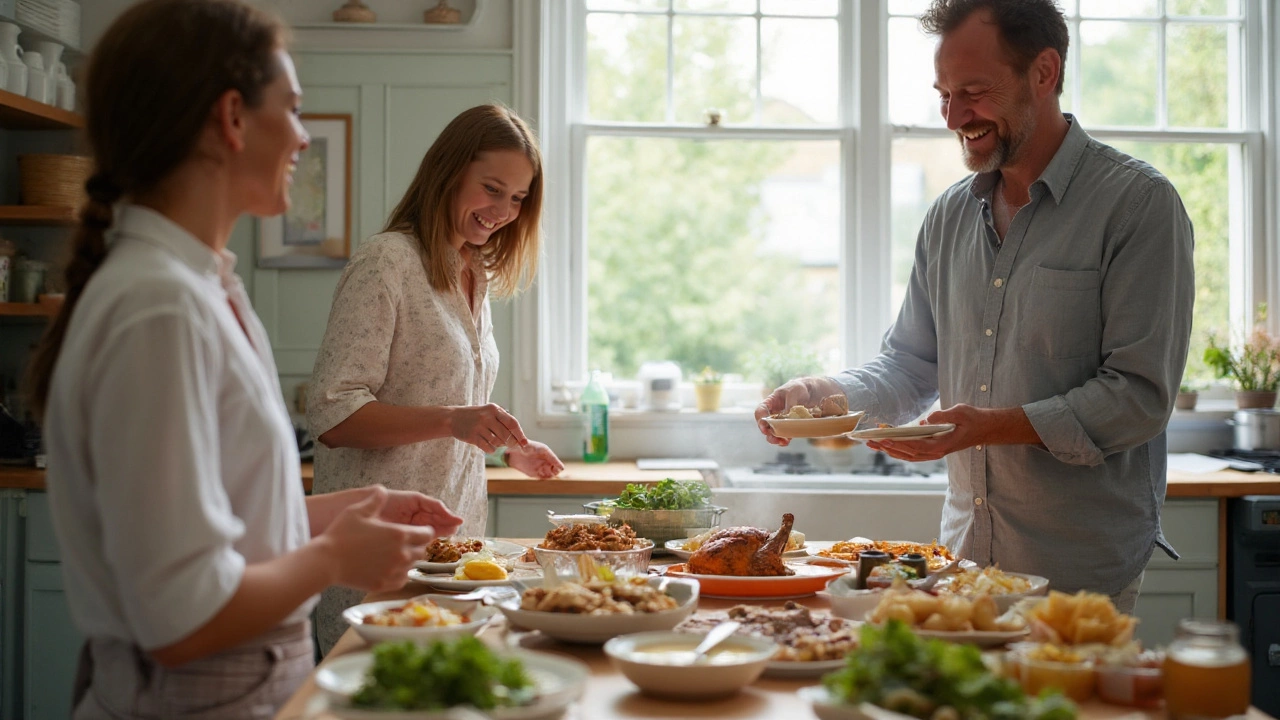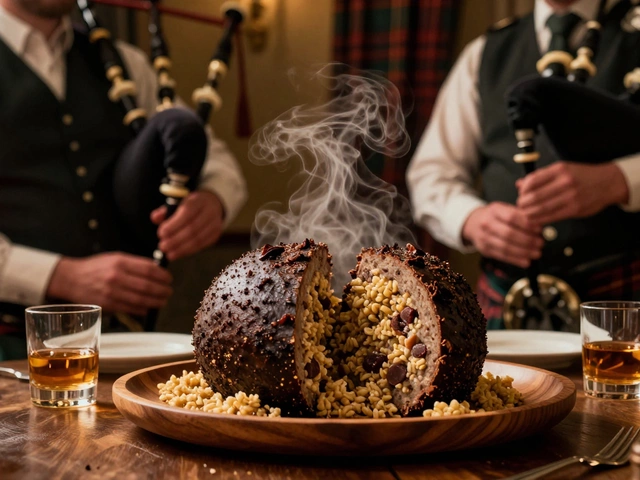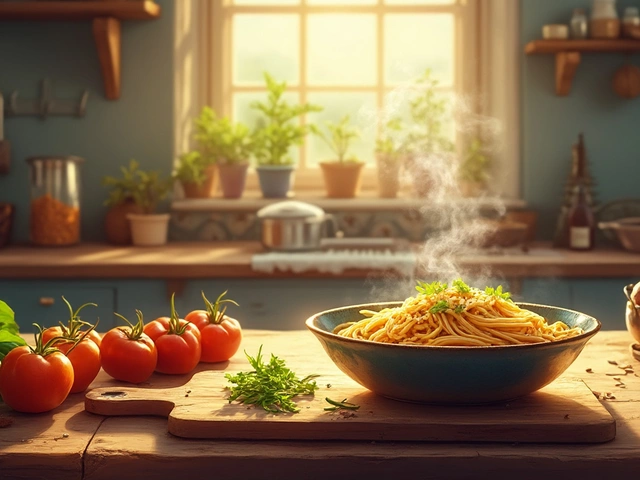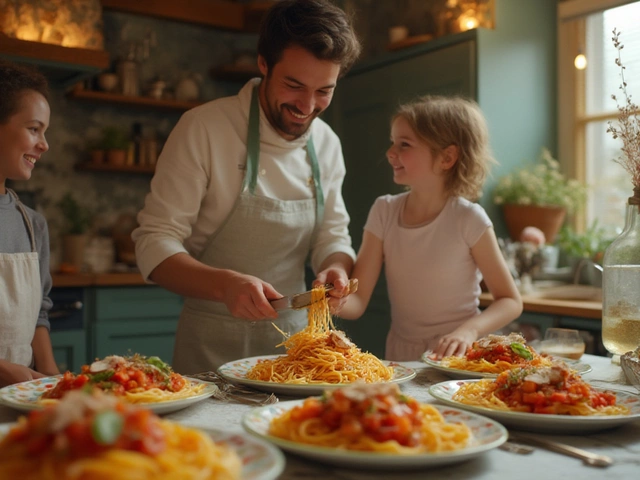You want a straight answer: what is the #1 disliked food? Short answer-there isn’t a single global winner. Across big polls in the US and UK over the last decade, the food that most often lands in first place is liver, with anchovies right behind. If you’re answering a trivia question and you need one name, say “liver.” If the poll is about pizza, anchovies usually top it.
- TL;DR: The most commonly reported #1 disliked food in broad, general-food polls is liver; anchovies are a close second, especially in topping-focused surveys.
- Why it varies: Different question framing (general food vs. pizza toppings), countries, and sample sizes lead to different #1s.
- What drives the hate: Biology (bitterness sensitivity, smell genes), texture, and cultural exposure all play a role.
- Practical move: If you’re feeding a crowd, skip liver and anchovies unless you know your audience-or use the prep tricks below to soften the edges.
- Fast quiz rule: General food = liver; pizza topping = anchovies; polarizing herb = cilantro.
So, what ranks #1? The best-supported answer
When people google the most disliked food, they want one winner. The catch is polls don’t ask the same question the same way, and taste is local. Even so, two foods show up at the top more than any others: liver and anchovies. Liver often leads in general-food lists, while anchovies dominate pizza-topping lists. Olives, beets, oysters, blue cheese, and cilantro often round out the top ten.
Here’s why “it depends” actually helps. If you’re playing trivia, the safest single answer is liver. If you’re debating toppings, it’s anchovies. If you’re talking about herbs that split a room, cilantro is the lightning rod. Those patterns repeat across multiple large, publicized polls and profile datasets.
Below is a quick snapshot of how different surveys frame the question and what came out on top. The point isn’t to crown a universal champion; it’s to show the pattern you can use in real life.
| Survey/Source | Year | Where | Question Focus | Reported #1 | Common Runners-up | Notes |
|---|---|---|---|---|---|---|
| YouGov (US/UK profiles & food preferences) | 2019-2024 | US/UK | General foods people dislike | Liver/offal | Anchovies, olives, oysters | Aggregated preference profiles show liver/offal with high net dislike. |
| OnePoll (multiple sponsors) | 2020-2023 | US | General disliked foods | Olives or liver (varies by wave) | Anchovies, beets, blue cheese | Several 2,000-person samples; rankings shift by demographics and wording. |
| Pizza topping polls (YouGov, chain-specific polls) | 2017-2024 | US/UK | Most disliked topping | Anchovies | Pineapple (polarizing), olives | When narrowed to toppings, anchovies almost always lead. |
| UK consumer food dislike lists (media roundups) | 2011-2022 | UK | General foods | Liver | Anchovies, olives | Offal tends to rank high in UK-specific lists. |
What should you say if someone presses you? Use this quick decision tree:
- Is the question “most disliked food” with no category? Say: “Liver.”
- Is it about pizza toppings? Say: “Anchovies.”
- Is it about polarizing ingredients/herbs? Say: “Cilantro.”
- Is it a seafood-heavy list? Oysters or anchovies usually top it.
Why these foods? They each carry strong sensory signals. Liver has metallic bitterness and a dense, irony texture. Anchovies are salty, fishy, and funky. Olives can be briny and bitter. Cilantro’s aldehydes read as “soapy” to people with certain smell receptor variants. None of that is random-you’re about to see the science.

Why we hate certain foods (and what that says about taste)
We like to think taste is a choice. A lot of it is training and context, sure. But there’s biology under the hood. A few mechanisms explain why the same food can delight one person and repel another.
Bitterness sensitivity (TAS2R38): About a quarter of people are “supertasters” who perceive bitterness more intensely. The TAS2R38 gene variants shape how we taste bitter compounds like glucosinolates in crucifers (Brussels sprouts, kale) and the bitter notes in liver. Classic work on this receptor (Kim et al., PNAS, 2003) linked genetic variants to bitterness perception. Many folks who once hated Brussels sprouts changed their minds after roasting became popular because heat and browning tame harsh compounds and add sweetness.
Smell receptor differences (cilantro “soap”): Cilantro’s divisive reputation has a genetic footprint. A 23andMe genome-wide study (Eriksson et al., 2012) found variants near the OR6A2 olfactory receptor associated with describing cilantro as tasting “soapy.” Depending on ancestry, 4-21% of people report the soap note. That’s why cilantro feels uniquely polarizing at a party.
Volatile compounds and “fishiness”: Anchovies, blue cheese, and some olives carry strong volatile compounds that announce themselves before you taste them. Sensitive noses pick up amines and sulfur notes that others barely notice. Aging, curing, and fermentation can amplify those aromas, which is great when you love funk-and rough when you don’t.
Texture and mouthfeel: Two things make liver hard for many people even when flavor is balanced: the dense, grainy texture and a lingering metallic feel. Oysters trigger a different complaint: slippery texture. Texture aversion is common in childhood, and for some adults it never fades.
Learned exposure and culture: If you grew up with chicken liver pâté, grilled sardines, or green olive tapenade, you may crave those flavors. If you didn’t, the first try can feel like a dare. Repeated, low-pressure exposure-especially when flavors are balanced with acid, fat, and sweetness-often shifts preferences. Chefs rely on this: slip anchovies into a sauce for body without broadcasting “fish.”
Physiology vs. allergy/intolerance: Dislike is different from intolerance. Someone might enjoy dairy but feel lousy after (lactose malabsorption affects a majority of adults worldwide; NIH and FAO sources commonly put global prevalence near two-thirds). That’s not a preference; it’s physiology. Keep that in mind when planning menus: “won’t eat” and “can’t eat” are separate issues.
All this is why two people can argue about the “best” way to cook broccoli and both be right-for their biology and history. The good news? You can design menus and recipes that reduce the pain points while keeping the spirit of the dish.

How to cook for picky crowds: swaps, fixes, and safe bets
Maybe you’re hosting. Maybe you’re the one on the hook to bring a dish to the office potluck. Either way, you don’t want a table full of polite half-bites. Use these steps to cover your bases, plus practical ways to make “hated” foods easier to love.
Step-by-step for a zero-drama menu:
- Ask two questions up front: “Any allergies or dietary restrictions?” and “Any hard no’s?” Keep it anonymous if you’re polling a group.
- Pick a main that’s broadly liked and flexible (roast chicken, pasta with optional meat/veg add-ins, rice bowls). Build in opt-outs.
- Use “polarizer insurance”: if you serve a risky item (say, anchovy Caesar), offer a no-anchovy version or a dressing on the side.
- Balance the flavor map: anchor salty/funky items with acid (lemon, vinegar), sweetness (roasted veg, caramelized onions), and fat (olive oil, dairy alternatives).
- Label clearly: mark items with “contains fish,” “contains offal,” “contains cilantro,” etc. It signals care and cuts awkwardness.
Make the usual suspects work (or swap them smartly):
- Liver → Smoother prep: Soak in milk (30-60 min) to mellow metallic notes. Pat dry. Sear hot and fast to medium; overcooking turns it chalky. Finish with acid (sherry vinegar) and sweet onions. Crowd-friendly swap: chicken liver pâté (silky, served with pickles), or skip offal and use mushrooms for umami.
- Anchovies → Hide the fish, keep the umami: Mince into a paste and melt into hot oil at the start of a sauce; it vanishes as “fish” and reads as savory depth. Combine with garlic, chili, and lemon (think Italian aglio e olio with anchovy). Swap for: miso, Parmesan rind, or Worcestershire (anchovy-based, so label it) if you need similar backbone.
- Olives → Balance the brine: Rinse, then marinate with citrus zest, herbs, and a touch of honey. Chop finely and fold into a tapenade with roasted red pepper to soften the bite. Swap for: capers (rinsed) or roasted peppers if you want the color without the briny punch.
- Cilantro → Offer options: Serve chopped cilantro on the side. If it must be in the dish, cut it with parsley and mint to lower the “soap” risk. Swap for: parsley + lime zest; or culantro (different leaf, stronger, but use lightly) when you want the aroma with a twist.
- Beets → Roast for candy edges: High heat (220°C/425°F) concentrates sugars; finish with citrus and salted yogurt or tahini for contrast. Swap for: roasted carrots or sweet potatoes for color without the earthy note.
- Oysters → Texture workaround: If raw is a hard no, cook them-grilled with garlic butter or baked Rockefeller-style. If serving raw, keep them icy cold and pair with bright mignonette.
Flavor balancing cheats that save dinners:
- Acid tames bitterness and funk: lemon, vinegar, verjus, pickled onions.
- Sweetness rounds edges: roasted veg, a splash of honey, caramelized alliums.
- Fat smooths and carries aroma: olive oil, dairy or alt-dairy, egg yolk emulsions.
- Heat adds distraction and excitement: chili flakes, fresh chiles, pepper sauces.
- Texture is king: add crunch (toasted nuts, breadcrumbs) next to soft items.
Quick checklist for hosts and office heroes:
- Send a 30-second poll: allergies, intolerances, hard no’s.
- Plan one “plain” option and one “adventurous” option.
- Keep dressings and strong toppings on the side.
- Label top allergens and polarizers (fish, nuts, cilantro, offal).
- Have a backup starch or salad everyone can eat.
Examples that thread the needle:
- Salad bar setup: Base of romaine + arugula. Toppings: croutons, Parmesan, roasted chickpeas. Two dressings: classic Caesar with anchovy, and a no-anchovy lemon-tahini. Everyone wins.
- Pasta two-ways: Spaghetti aglio e olio with a hidden anchovy base for depth; reserve some sauce before adding anchovy and finish a second pan with miso for a fish-free option.
- Tapas night: Offer chicken liver pâté with sweet onion jam, but also a mushroom rillettes and marinated roasted peppers. Put tiny labels; people self-select without fuss.
Mini‑FAQ
- Q: If I must pick one “most disliked food,” what should I say? A: Liver for general lists, anchovies for pizza toppings. That aligns with repeated poll patterns in the US/UK.
- Q: Is cilantro really hated by a lot of people? A: It’s polarizing. Genetic work by 23andMe linked smell receptor variants to the “soapy” perception; the share varies by ancestry but is large enough to plan around.
- Q: Why do kids hate veggies more than adults? A: Kids are more sensitive to bitterness and texture. Exposure and better cooking methods (roasting, seasoning) often flip that script.
- Q: Can cooking actually change someone’s mind on liver or anchovies? A: Often, yes. Milk soaking and quick searing fix most liver issues; melting anchovy into hot oil makes it vanish as “fish” and register as savory.
- Q: What’s a safe crowd-pleaser if I’m unsure? A: Roast chicken or veg-heavy grain bowls with toppings on the side. Build-your-own beats one-size-fits-all.
Sources and credibility notes: Large, recurring consumer polls and profile datasets from YouGov in the US and UK have consistently shown high net dislike for liver/offal and anchovies; pizza-topping polls repeatedly put anchovies at the bottom. Several US OnePoll surveys (typical n≈2,000) between 2020 and 2023 report olives, anchovies, and liver among the top dislikes; order shifts with wording and demographics. On the science side, TAS2R38’s role in bitterness sensitivity was detailed by Kim et al. (PNAS, 2003), and cilantro’s “soap” perception was associated with OR6A2 variants by Eriksson et al. at 23andMe (2012). NIH and FAO resources estimate global adult lactose malabsorption near two-thirds-relevant when separating “dislike” from “can’t tolerate.”
If you only needed the answer for a quick debate: say “liver.” If you care about winning over eaters, use the prep tricks and give people choices. The best menu makes room for both the anchovy lovers and the anchovy ghosts in the sauce.









Write a comment